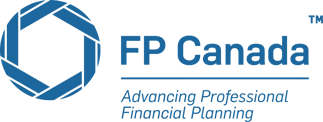I have had an interesting last few months. We have been moving in a direction that will put us on the leading edge of the delivery of financial planning products and services to clients, and probably about two years in front of the pack. But, to my surprise, we have found pockets of stubborn resistance.
I pride myself on thought leadership in my area of expertise; retirement income planning. We have very few clients with the ubiquitous, cookie cutter, nobody-moves-nobody-gets-hurt, traditional 60/40 portfolio. How so many people, in such unique and different situations, all end up with the exact same recommended portfolio (one that is heavily exposed to inflation risk, no less) is a question that cannot be answered without some element of cynicism.
Anyway, our next big project will be to migrate, when appropriate for the client, to a direct billing business model.
This is a business model that can evoke strong opinions in the industry. Some critics of the traditional model (in which an advisor’s compensation is embedded in the investment product) point out the lack of transparency and potential for conflict of interest. I can empathize with that, and I care about these things. Just not too much. For me there are more noble, more important battles to fight.
What I care about is efficiency. Can I deliver the best possible financial planning services, utilizing the best possible product solutions, and the most effective pricing to the client? That’s what I care about, and that’s why I am looking to make some changes.
I have unique abilities and multi-disciplinary expertise that has been honed over more than twenty years. To me, the benefits of evolving are self-evident. After all, if I can deliver the same or better solutions at a better cost, who wouldn’t jump at that?
As it turns out, there are a number of people. And that’s when I had a moment of illumination.
What appears self-evident to me can seem like a foreign language to others when I am operating in my unique ability zone. It’s the curse of knowledge. I know things that other people don’t. Which can lead to communication issues if I let myself fall into the assumption that they are already familiar with things that I take for granted.
We are positioning ourselves on the leading edge. And subsequently I came to understand that not everyone is comfortable to be on the leading edge. Even if is more cost-effective.
Some people are comfortable with the status quo. They are familiar with it. I realized then that when people have comfort and familiarity, the discomfort of change can outweigh the cost effectiveness of efficiency. The benefits to the client may be self-evident to me, but that doesn’t mean the client shares the same perspective. Change can be hard.
But here is the thing. Like it or not, you are going to have to deal with these matters anyway. Industry changes are imminent and, even if you wanted to, you can’t put the toothpaste back in the tube.
Nobody likes surprises. Soon Canadians are going to find out what they have been indirectly paying all along for their financial products via embedded fees. And there are going to be some pretty big surprises for some people out there.
I fully expect some bad decisions to follow. I expect some people to seek out the least expensive solutions. Folks, paying less to get less is no great feat. Anyone can do that.
The art is in delivering the highest level of professional advice, using top shelf products that are consistent with a client’s unique needs, and delivering all that for the most cost effective price. That’s what we are striving for, and that’s why we are evolving.
What’s in it for clients? It’s pretty simple, actually. Direct billing will offer more transparency, sure. But, more importantly, it will shrink your costs without shrinking your quality.
What’s the catch? Well, it’s not so much a catch as it is a frame of reference really. If I can get you the same stuff for a transparent $100 when you used to pay an opaque $110, then the appropriate frame of reference is what you were really paying before ($110), not what you were actually seeing before ($0). The conundrum is that, although I am bringing costs down from an indirect $110 to a direct $100, that people look at it as a brand new $100 expense because they can see their fees better now, and they don’t have a frame of reference for how much they were really paying before.
At the end of all this we want people to know that they are in good hands. If we can improve on the cost effectiveness by a direct billing model we will bring that to your attention. And if you remain better served by the traditional model of paying fees indirectly, that’s fine too. One way or the other, we are going to give you our best work.
Direct billing has the potential to work best for clients in need of ongoing, professional financial advice, and who have (or wish to acquire) significant assets. There are additional tax benefits for direct billing on non-registered accounts.
Please let us know if we can be of service in any way.
Kind regards,
Brad Brain, CFP, R.F.P., CLU, CH.F.C, CHS, FCSI, TEP












